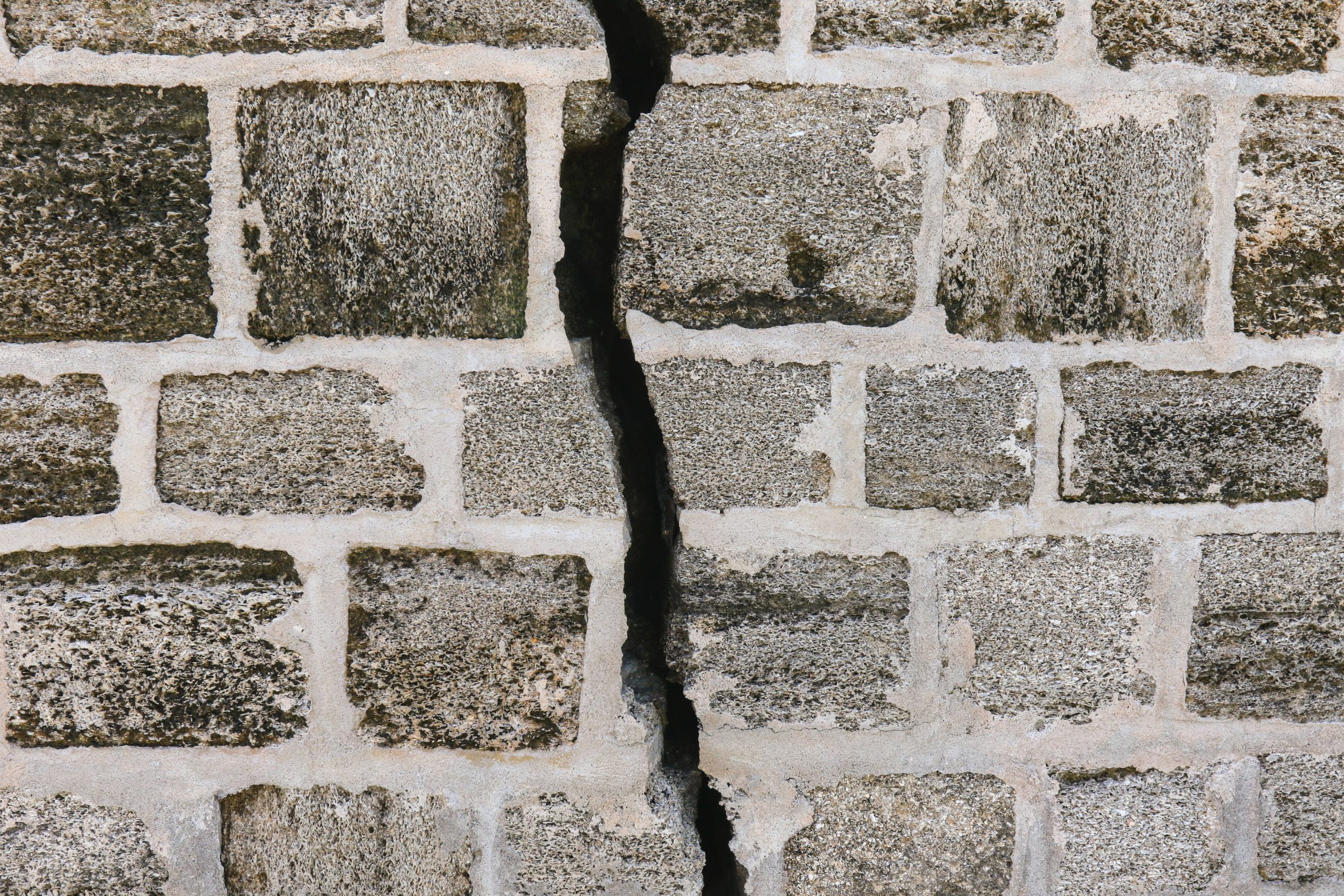If you have ever looked closely at cinder block or brick structures, you are probably aware of step cracks. These are vertical and horizontal cracks that run through the mortar of blocks, making them look like stair steps.
These common foundational defects are often no more than cosmetic blemishes on an otherwise structurally sound building. Simply resealing the step crack can fix much of the issue and keep it from expanding. However, they can also indicate serious underlying foundational issues.
Talk with a specialist about step cracks in your basement to accurately assess the extent of the damage. An expert can often educate you on how to fix step cracks and offer effective solutions, including piering.
What Causes Step Cracks?
It is normal to see step cracks appear due to the house settling naturally. In the case of basements, however, hydrostatic pressure built up over time can create step cracks. Water built up due to poor drainage can cause the soil to expand, placing excess pressure on subterranean basement walls. Step cracks associated with leaning or bowing walls are common in these cases.
If the step cracks reach down to the footing, it indicates there is an issue with the footing. The footing is the horizontal slab that the wall rests on to disperse the weight, keeping it from sinking. Shifting soil caused by oversaturation or lack of proper depth can open pockets that it sinks into.
If the footing is unevenly settling, it can cause the walls to bow and the floor to the slope. Poorly aligned doors and cracks in the ceiling and windows are also common symptoms of uneven settling.
Sealing cracks is a necessary step to reduce moisture penetration but will fail to fix anything beyond cosmetics. This problem will worsen over time, leading to overall structural integrity and safety issues. Restoring the footing with bolstered support becomes critical in these cases, with piering being an effective long-term solution.
How to Fix Step Cracks with Piering
When a foundation repair specialist assesses the nature of step cracks in the basement, they may suggest piering. If footings are shifting down into unstable soil, they need extra support to lift and hold them in place.
Piering involves fitting vertical pillars to the foundation to provide substantial support. These are driven deep into sturdy earthen layers, like bedrock, for stability. Then, attach supports are to the footing with brackets. The specialist will determine how many piers to use depending on the basement’s size and severity of the shift.
Once in place, if the footing needs to be pulled into place, the repair team will use a hydraulic lift. A hydraulic cylinder lifts the beams, and subsequently the foundation, to the correct level. Wall brackets are then bolted or welded to the piers to lock them into place. After installation, carbon fiber straps or anchors may be used for additional support.
Piers come in two varieties — push piers and helical piers. Push piers are often coated steel piers that are driven in place with a hydraulic press. Helical piers are applied similarly but look more akin to large screws.
Advantages of Fixing Step Cracks with Piering
Piering is a practical solution to the underlying issues that cause step cracks for a number of reasons. Both push piers and helical piers are effective in virtually all soil types, even with slopes and poor soil quality.
Piering is a relatively non-invasive process. The lack of large, heavy equipment makes piering setups easy no matter the space. The home is often still completely usable during installation and the application does not affect the yard. Displaced soil may only occur around the foundation in small areas that are easily refilled after the work is complete.
Most importantly, piering can be more cost-effective compared to many other fixes. If the problem is caught before the foundation needs replacement, piering can save hundreds or thousands of dollars.
A complete rebuild is necessary in the worst cases. Have a specialist assess the early signs to find out if piering is a viable solution. It is a cost-effective, inexpensive and long-lasting solution that restores both the structure and the ground it sits on.
Step Cracks in the Basement? Call Ray Arnold Masonry
For over 65 years, our family-owned business has been serving our Ohio communities with expert craftsmanship and quality care. We commit to resolve any and all masonry needs, leaving lasting solutions and satisfied customers. If you have step cracks in your basement or around your home, contact Ray Arnold Masonry today. Our team is on hand to answer any questions or schedule an appointment for a technician to perform an assessment.

